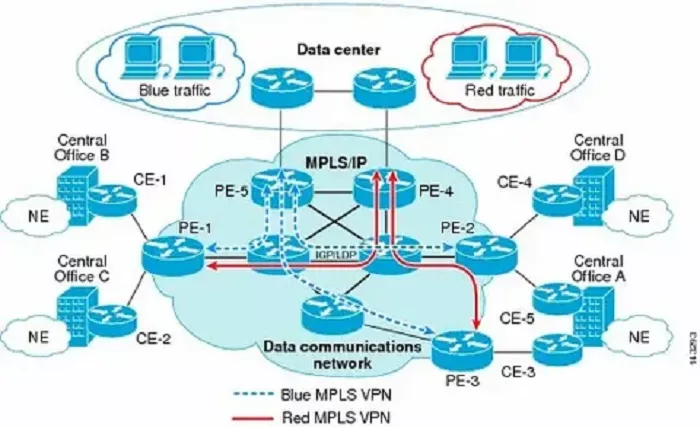The global IP-MPLS VPN Services Market is expected to experience strong growth between 2025 and 2035, fueled by increasing demand for secure, reliable, and scalable network solutions. According to market projections, the sector will grow at a compound annual growth rate (CAGR) of 8.4%, rising from USD 62.7 billion in 2025 to USD 140.5 billion by 2035.
More businesses are turning to IP-MPLS (Internet Protocol – Multiprotocol Label Switching) VPNs to handle the growing complexity of operating across multiple locations. These services are known for their ability to manage traffic efficiently, offer strong security, and ensure consistent data delivery.
Shift Toward Digital and Cloud-Based Operations
As digital transformation accelerates and cloud adoption increases, businesses are investing in high-performance networking technologies. The growing use of hybrid cloud environments and remote work models has made secure communications and reliable connections essential.
Enterprises are prioritizing networking solutions that protect data, maintain performance, and support real-time applications. MPLS VPNs are especially valued in sectors like finance, healthcare, retail, and manufacturing, where data privacy and uptime are critical.
Key Industry Trends
A major trend in the market is the rise of hybrid WAN models, which combine MPLS with internet-based VPNs to balance performance and cost. While MPLS remains the top choice for sensitive and critical data, software-defined WAN (SD-WAN) is increasingly used to support less sensitive traffic.
Another trend is the integration of advanced security into MPLS frameworks. Service providers are now offering features such as network segmentation, threat detection, and user-level access controls. Artificial intelligence and automation are also being used to improve traffic routing and reduce network disruptions.
Growing Opportunities for Service Providers
In response to increasing cybersecurity threats and enterprise demands, service providers are expanding their offerings. New technologies like software-defined networking (SDN) and network function virtualization (NFV) allow for faster, more flexible deployments.
Telecom companies are also partnering with major cloud providers to offer seamless cloud access through their MPLS networks. This reduces latency and improves performance for cloud-based applications.
Industry-specific MPLS solutions are also emerging. These are tailored to meet the specific security, compliance, and connectivity needs of sectors like banking, government, and healthcare.
Recent Developments
In recent years, providers have introduced smarter and more flexible MPLS services. These include AI-driven traffic management, real-time monitoring tools, and dynamic bandwidth allocation. Global MPLS networks have been expanded, especially in regions like Southeast Asia, the Middle East, and Africa.
With more employees working remotely, providers are offering secure MPLS-enabled remote access with strong encryption and authentication. In addition, strict data laws have led to the growth of localized MPLS networks to meet compliance requirements.
Competitive Landscape
The market is highly competitive, with major telecom and managed service providers racing to expand their networks and add new features. Companies are investing in edge computing, better customer experience, and global reach. Partnerships between MPLS providers and cloud services are also reshaping the way businesses manage wide area networks.
More specialized providers are also entering the market, offering industry-specific MPLS VPN solutions with enhanced compliance and security.
Key Players
Leading companies in the IP-MPLS VPN Services Market include:
- AT&T Inc.
- Verizon Communications Inc.
- BT Group plc
- Orange Business Services
- NTT Communications Corporation
- Tata Communications Ltd.
- Lumen Technologies (formerly CenturyLink)
- China Telecom Corporation Limited
- Singtel
- Vodafone Group
These companies are recognized for their wide global networks, strong service level agreements (SLAs), and integration with hybrid WAN technologies.
Market Segmentation
The market can be divided by:
- Service Type: Managed services and self-managed services. Managed services are gaining popularity as businesses seek expert support.
- Enterprise Size: Large enterprises dominate the market, but interest from small and medium-sized businesses is rising.
- End-User Industry: Key sectors include BFSI, healthcare, manufacturing, retail, IT & telecom, and government.
- Region: North America currently leads due to early adoption and strong enterprise presence. Asia-Pacific is expected to see the fastest growth due to rapid industrial and digital development.


